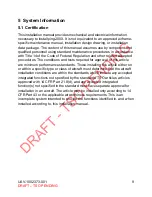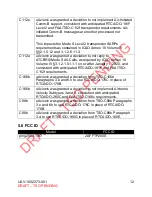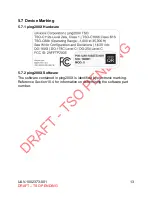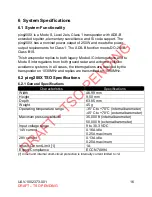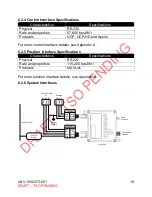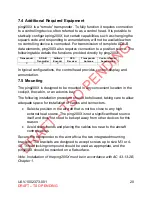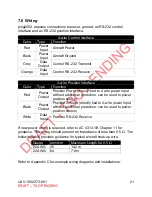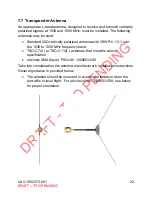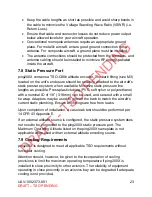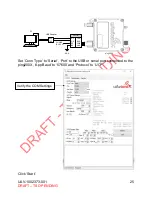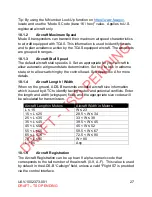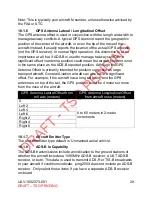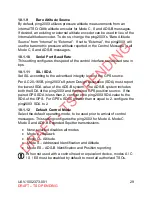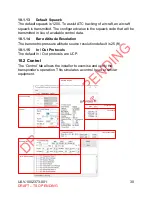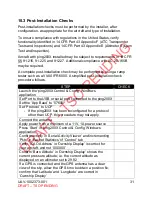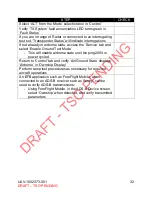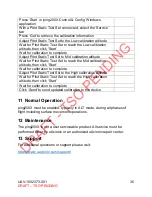
UAV-1002373-001
23
DRAFT
– TSO PENDING
•
Keep the cable lengths as short as possible and avoid sharp bends in
the cable to minimize the Voltage Standing Wave Ratio (VSWR) (i.e.
Return Loss).
•
Ensure that cable and connector losses do not reduce power output
below allowed levels for your aircraft operation.
•
Conventional monopole antennas require an appropriate ground
plane. For metallic aircraft, ensure good ground connection to the
antenna. For composite aircraft, a ground plane must be installed.
•
The antenna connections should be protected from the elements, and
antenna cabling should be installed to minimize RF energy radiated
inside the aircraft.
7.8 Static Pressure Port
ping200X contains a TSO-C88b altitude encoder. The barb fitting (size M3)
located on the unit’s enclosure should be securely attached to the aircraft’s
static pressure system, when available. Minimize static pressure line
lengths as possible. Press-plastic tubing (PVC, soft nylon or polyurethane)
with a nominal ID of
1/8” (3.18mm) can be used, and secured with a small
tie wrap.
Adapters may be used to convert the barb to match the aircraft’s
current static plumbing. Ensure any fittings are free from leaks.
Upon completion of installation, a case leak test should be performed per
14 CFR 43 Appendix E.
If an external altitude source is configured, the static pressure system does
not need to be connected to the ping200X static pressure port. The
Maximum Operating Altitude listed on the ping200X nameplate is not
applicable when used with an external altitude encoding source.
7.9 Cooling Requirements
ping200X is designed to meet all applicable TSO requirements without
forced-air cooling.
Attention should, however, be given to the incorporation of cooling
provisions to limit the maximum operating temperature if ping200X is
installed in close proximity to other avionics. The reliability of equipment
operating in close proximity in an avionics bay can be degraded if adequate
cooling is not provided.

